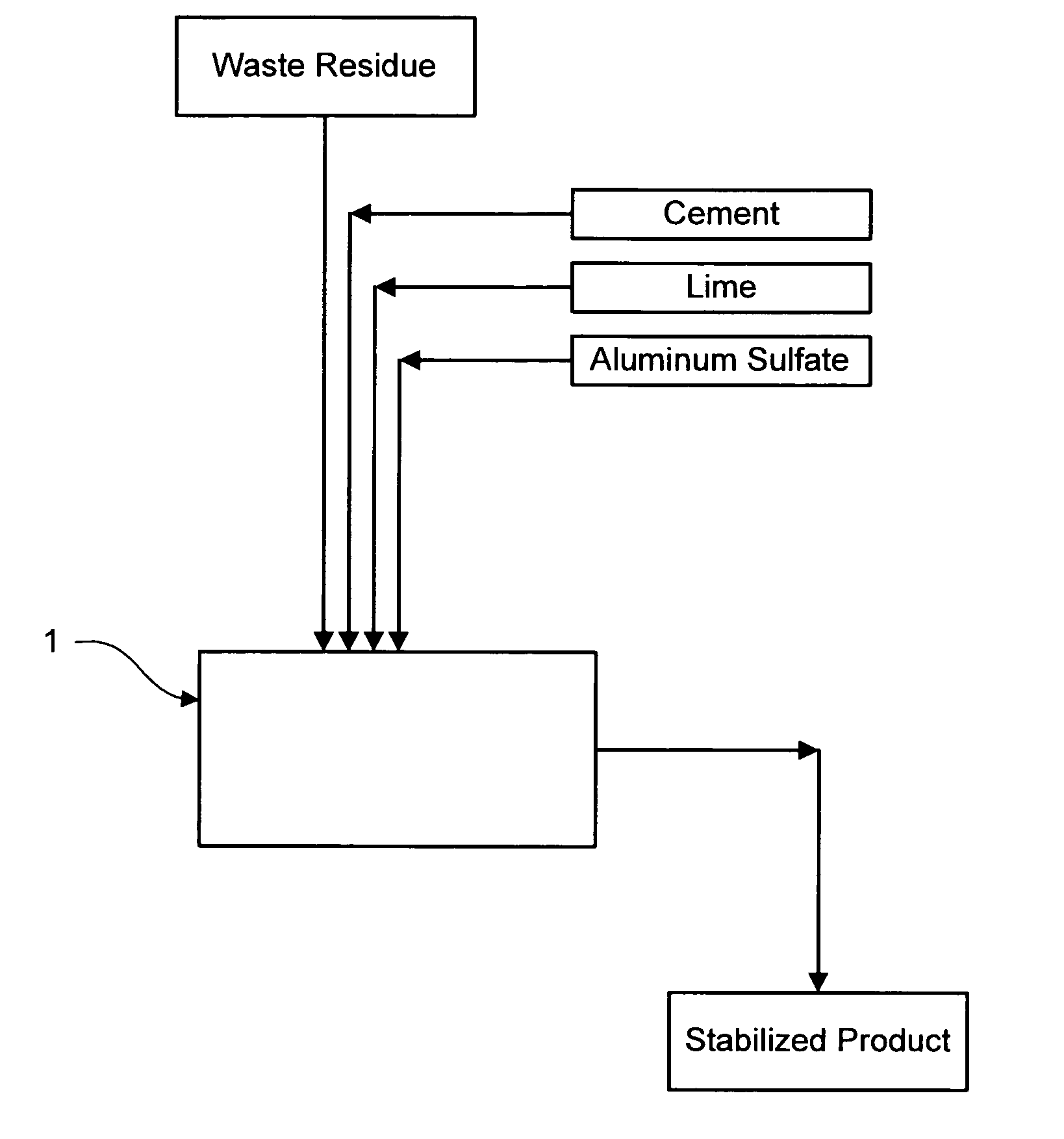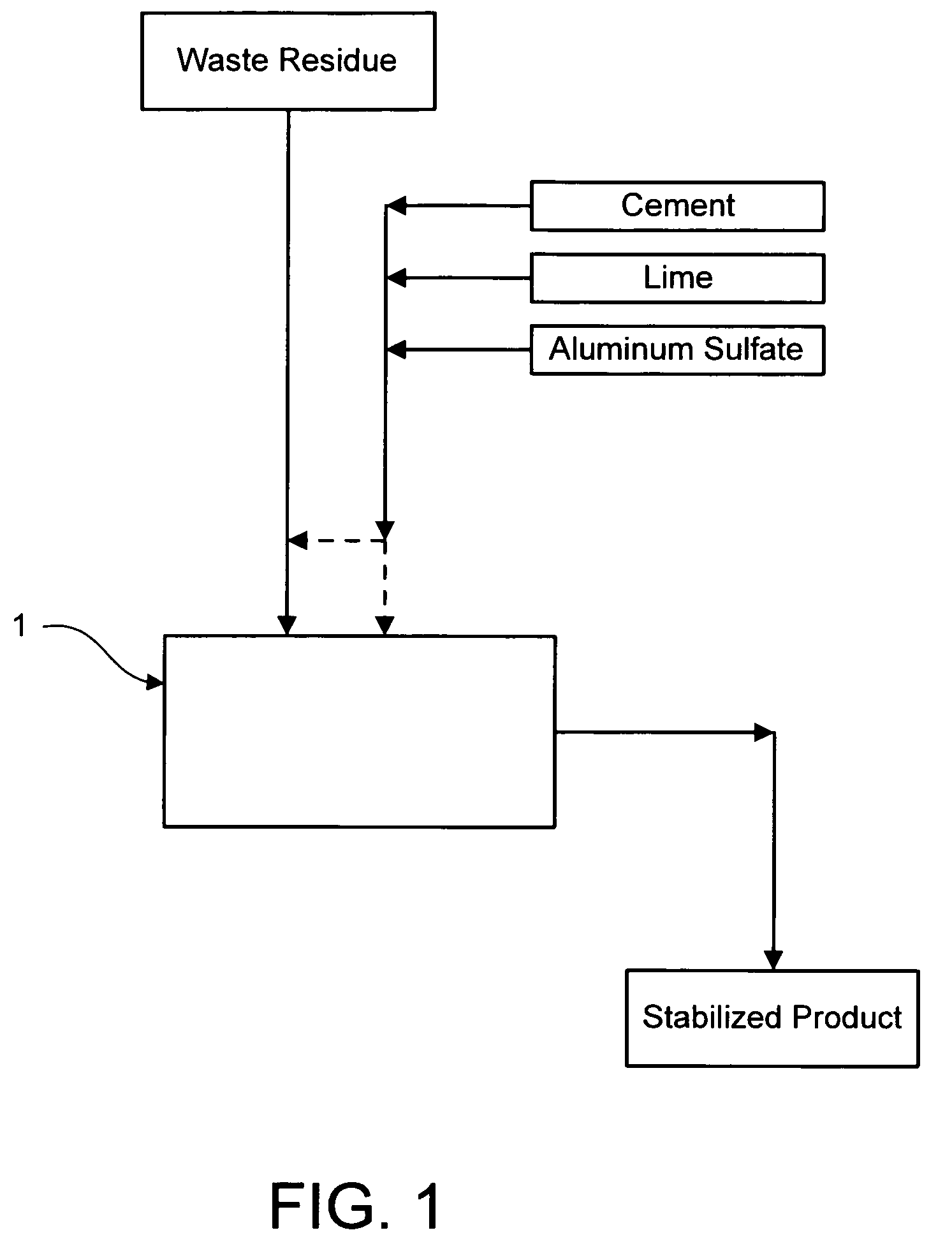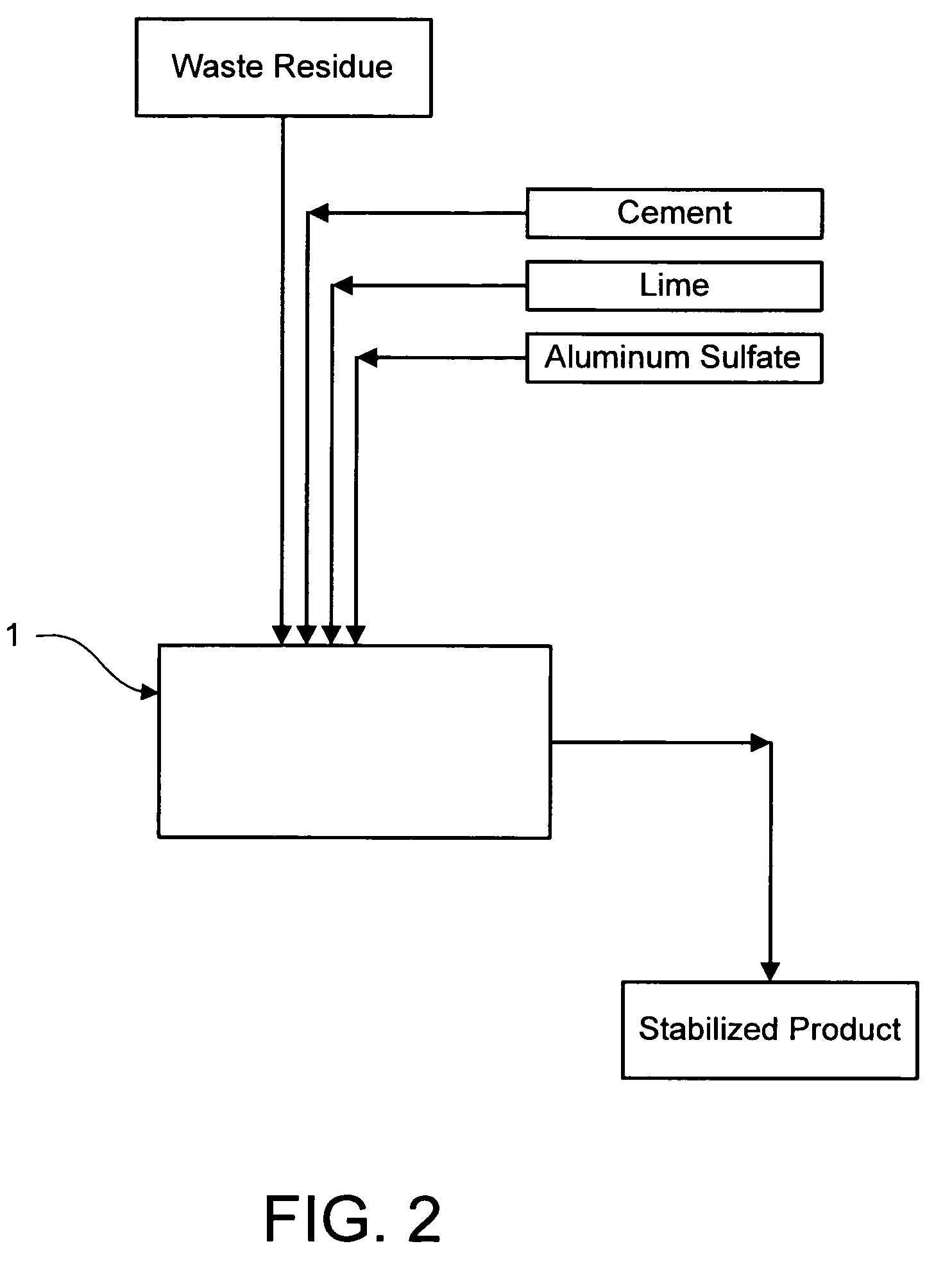Method for chemically stabilizing waste materials containing multivalent oxyanions
a multivalent oxyanon and chemical stabilization technology, applied in the direction of sustainable manufacturing/processing, final product manufacturing, separation processes, etc., can solve the problems of inability to work and/or adapt to water and wastewater treatment techniques, and the substitution of selenium oxyanions for sulfate is more difficul
- Summary
- Abstract
- Description
- Claims
- Application Information
AI Technical Summary
Benefits of technology
Problems solved by technology
Method used
Image
Examples
example 1
[0054]In this example five different samples of selenium bearing residue from the same glass manufacturer were tested using three different stabilization technologies. The first technology tested is referred to herein as BDAT-1 and used reagent-to-waste ratios of 2:1 cement plus 0.70:1 ferrous sulfate. These reagents were in accordance with the selenium stabilization technology upon which EPA granted the first site-specific selenium variance in 1998. The second technology tested is referred to as BDAT-2 and used reagent to residue ratios of 1:1 cement, 1:1 cement kiln dust, and 0.35:1 ferrous sulfate in accordance with the selenium stabilization technology upon which EPA granted a similar site-specific selenium variance in 2004. The third tested technology is the new technology invented by the present inventor and described herein. The third (or present) technology used reagent-to-residue ratios of 1:1 cement, 0.5:1 lime; 0.28:1 Al2(SO4)3, and 0.017:1 calcium polysulfide (CaSx). It ...
example 2
[0058]In this example comparative tests were conducted to establish that ettringite is a key constituent of the stabilization process. Three samples were tested each of which included cement and lime reagents. The resultant TCLP pHs were all about the same and all had similar aluminum:residue ratios. Only the sample used in Test B included sulfate which is necessary to produce ettringite. The TCLP selenium concentration for Test No. B was only 5.6 mg / L whereas TCLP selenium concentration for the test samples that did not include sulfate ranged from 18 mg / L to 39 mg / L. The results of this example are shown in Table II below.
[0059]
TABLE IIAl:Residue1TCLPTCLP SeTestCementCa(OH)2Al2(SO4)3Al2Cl(OH)5RatiopH(mg / L)A2:10.70:1nonenone0.05212.018.0B2:10.42:10.28:1none0.09611.95.6C1:10.22:1none0.180.08211.739.01Assumes the aluminum content of cement is 2.6%.
example 3
[0060]In this example comparative tests were conducted to establish that cement is a key constituent of the stabilization process. Two test samples were used, one which included cement and one which excluded cement. The results of this example are shown in Table III below. As can be seen, the test sample that excluded cement gave very poor selenium stabilization results, even though lime and aluminum sulfate were added.
[0061]
TABLE IIITCLP SeTestCementCa(OH)2Al2(SO4)3CaSx(mg / L)Dnone0.48:10.28:10.017:159mg / LE1:10.50:10.28:10.017:15mg / L
PUM
| Property | Measurement | Unit |
|---|---|---|
| leachate concentration | aaaaa | aaaaa |
| concentrations | aaaaa | aaaaa |
| concentrations | aaaaa | aaaaa |
Abstract
Description
Claims
Application Information
 Login to View More
Login to View More - R&D
- Intellectual Property
- Life Sciences
- Materials
- Tech Scout
- Unparalleled Data Quality
- Higher Quality Content
- 60% Fewer Hallucinations
Browse by: Latest US Patents, China's latest patents, Technical Efficacy Thesaurus, Application Domain, Technology Topic, Popular Technical Reports.
© 2025 PatSnap. All rights reserved.Legal|Privacy policy|Modern Slavery Act Transparency Statement|Sitemap|About US| Contact US: help@patsnap.com



